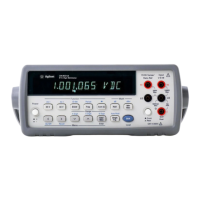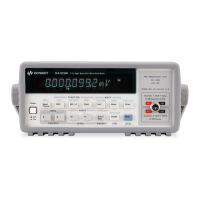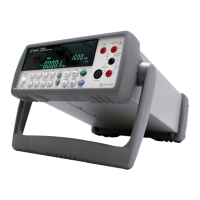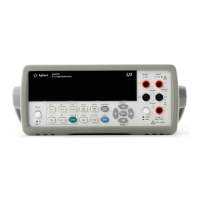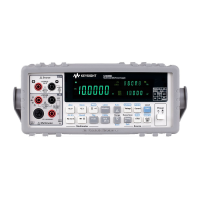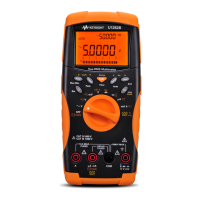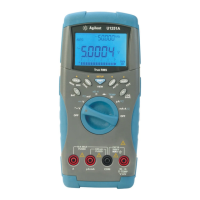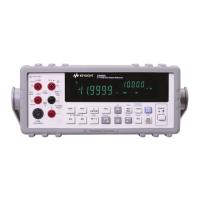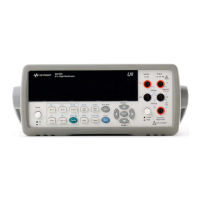Appendix B GPIB Commands 305
LOCAL LOCKOUT (LLO)
Examples LOCAL 7 !SETS GPIB REN LINE FALSE (ALL DEVICES GO TO LOCAL). (YOU MUST NOW
EXECUTE REMOTE 7 TO RETURN TO REMOTE MODE).
LOCAL 722 !ISSUES GPIB GTL TO DEVICE AT ADDRESS 22. (AFTERWARDS, EXECUTING
ANY MULTIMETER COMMAND OR REMOTE 722 RETURNS THE MULTIMETER TO REMOTE
MODE.
LOCAL LOCKOUT (LLO)
Disables the multimeter's LOCAL key.
Syntax LOCAL LOCKOUT 7
Remarks • If the multimeter is in the local state when you send LOCAL LOCKOUT, it
remains in local. If the multimeter is in the remote state when you send LOCAL
LOCKOUT, its LOCAL key and keyboard are disabled immediately.
• After disabling the LOCAL key with LOCAL LOCKOUT, you can only enable
it by sending the GPIB LOCAL 7 command or by cycling power. If the
multimeter's LOCAL key is disabled by LOCAL LOCKOUT, the LOCAL 722
command enables the keyboard but a subsequent remote command disables it.
Sending the LOCAL 7 command, however, enables the LOCAL key and keeps
it enabled even after a subsequent remote message.
• If the multimeter's keyboard is disabled by both LOCAL LOCKOUT and the
LOCK command, you must clear both to regain control of the keyboard.
LOCAL LOCKOUT is cleared with the LOCAL command. LOCK is cleared
by setting LOCK to OFF.
Examples 10 REMOTE 722 !SETS DEVICE AT ADDRESS 22 TO REMOTE STATE
20 LOCAL LOCKOUT 7 !SENDS LOCAL LOCKOUT (LLO) TO ALL
30 END !DEVICES ON THE BUS
REMOTE
Sets the GPIB REN line true.
Syntax REMOTE 7
REMOTE 722
Remarks • The REMOTE 722 command places the multimeter in the remote state. The
REMOTE 7 command, does not. by itself. place the multimeter in the remote
state. After sending the REMOTE 7 command, the multimeter will only go into
the remote state when it receives its listen address.
• In most cases. you will only need the REMOTE command after using the
LOCAL command. REMOTE is independent of any other GPIB activity and is
sent on a single bus line called REN. Most controllers set the REN line true
when power is applied or when reset.
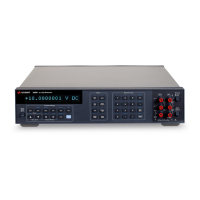
